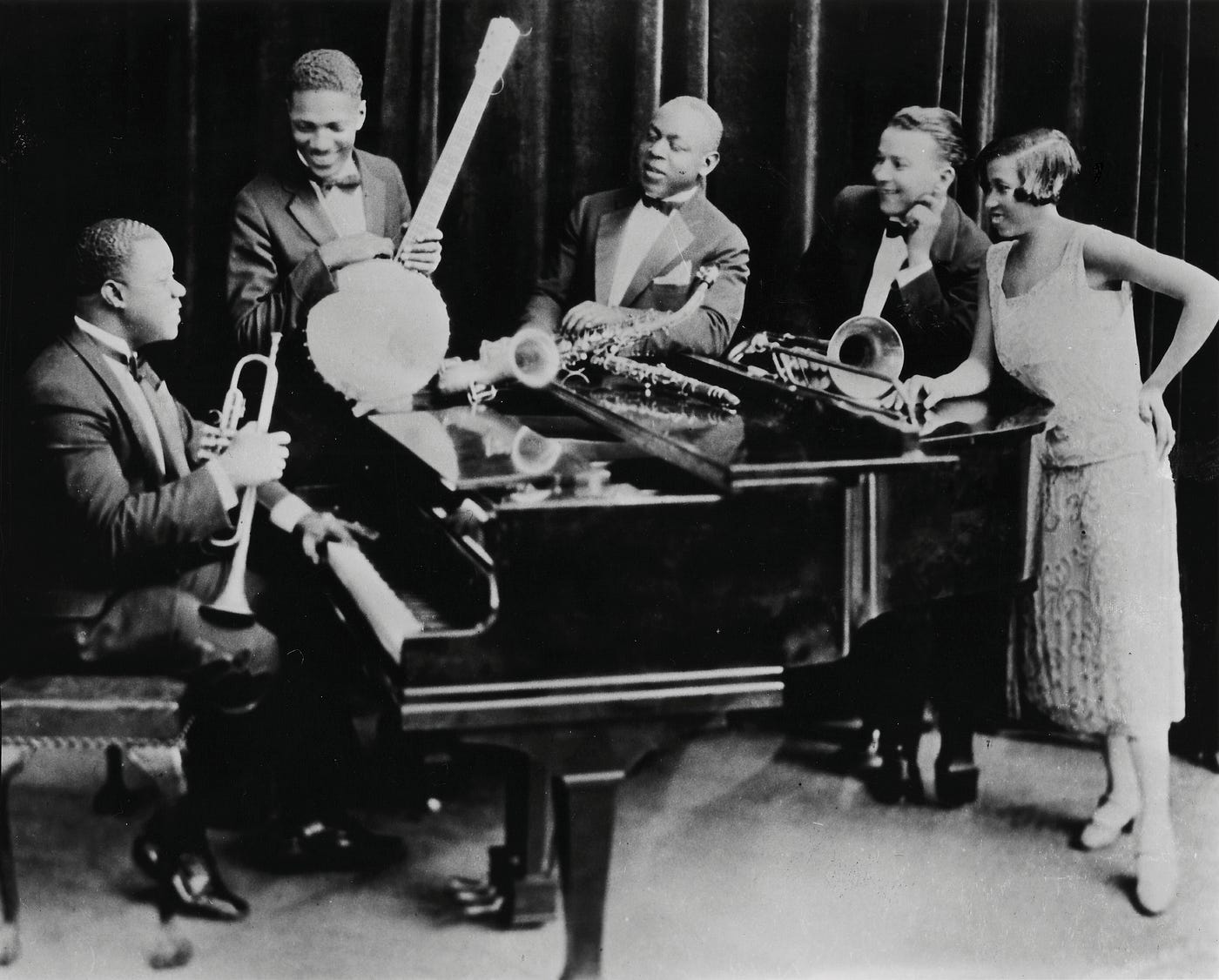What Is the Significant in West End Blues
On "West End Blues"

"West End Blues" is, indisputably, the greatest sound recording of the twentieth century. If the opening four notes of Beethoven's Fifth Symphony is fate knocking on the door, as Ludwig himself once described it, then Satchmo's opening of "West End Blues" is Ed McMahon ringing your doorbell and then busting down the door to hand over one of his famous big checks for about a billion dollars.
It is a music of great power, originality, and profound emotional depth. So much so that Billie Holliday once remarked that it felt as if the music was making love to her. You should bring it home with you one night and see what happens.
Go ahead. Take a listen:
That opening just kills it.
Jazz critic Murray Horwitz has described it as "the most important 15 seconds in all of American music." Deservedly so. There is a lot going on there, a lot that makes it such an important piece of music. Perhaps the most important thing about it, even more so than its virtuosic craftsmanship, is its distinctly American synthesis of musical styles.
By the time Louis Armstrong took his band into a Chicago studio on June 28, 1928 to record "West End Blues" he had already become a master of many diverse types of music. While working with Erskin Tate's symphony orchestra at the Vendome Theater he honed his classical music chops. Here he regularly performed such classical pieces as the Intermezzo from Mascagni's Cavalleria Rusticana and selections from Puccini's Madame Butterfly. Meanwhile, he continued recording the hot New Orleans jazz he had been brought up in during his youth. You can hear these worlds collide beautifully in the opening of "West End Blues." The first part of this outstanding trumpet solo is pure hot jazz in the New Orleans style: quick, pugilistic, high energy notes. But after this explosion of joy reaches its climax the rest of the band joins in and suddenly we settle down into a more slow, contemplative, and forlorn music in the classical vein though still squarely in the blues tradition.
What follows this wonderful opening is a trombone solo by John Thomas. It's a great little piece of music, accompanied as it is by Zutty Singleton, the drummer, playing a set of "horse's hooves" that evokes the image of a downtrodden man making his sad way home on horseback after a hard day's work. This gives way to a call-and-response section between the clarinetist Jimmy Strong and, in one of the earliest examples of scat singing, Louis Armstrong on vocals. It is a very sweet section, not at all like the ugly scatting stereotypes some would claim Armstrong fell into later in his career.
Up next is Earl Hines's masterful piano solo. You'll be hard pressed to find anything touching it in the entire jazz canon. Hines, like Armstrong in his opening solo, combines the best of classical and jazz music. This is truly a music to behold. In fact, if you didn't listen any further you'd feel that this piano solo is the highlight of the recording. But you haven't heard anything yet.
Armstrong closes the track out just how he started it: with a trumpet solo for the ages. This is music in the key of life. In it Armstrong uses his horn to tell a personal story of growing up in squalid poverty, suffering from paternal abandonment, and experiencing the harsh racial animus of American life all while simultaneously projecting a universal tale of sad endurance and mournful triumph.
"West End Blues" is music of unparalleled beauty, elegance, and sophistication. It deserves a place in everybody's music library.
Source: https://brianedenton.medium.com/on-west-end-blues-73151f301ba7
0 Response to "What Is the Significant in West End Blues"
إرسال تعليق